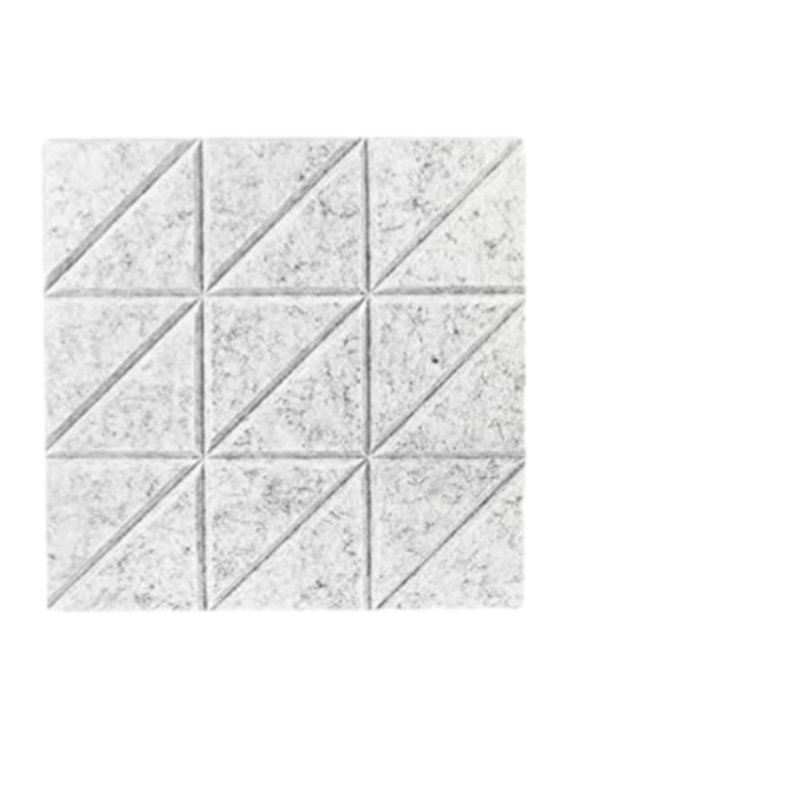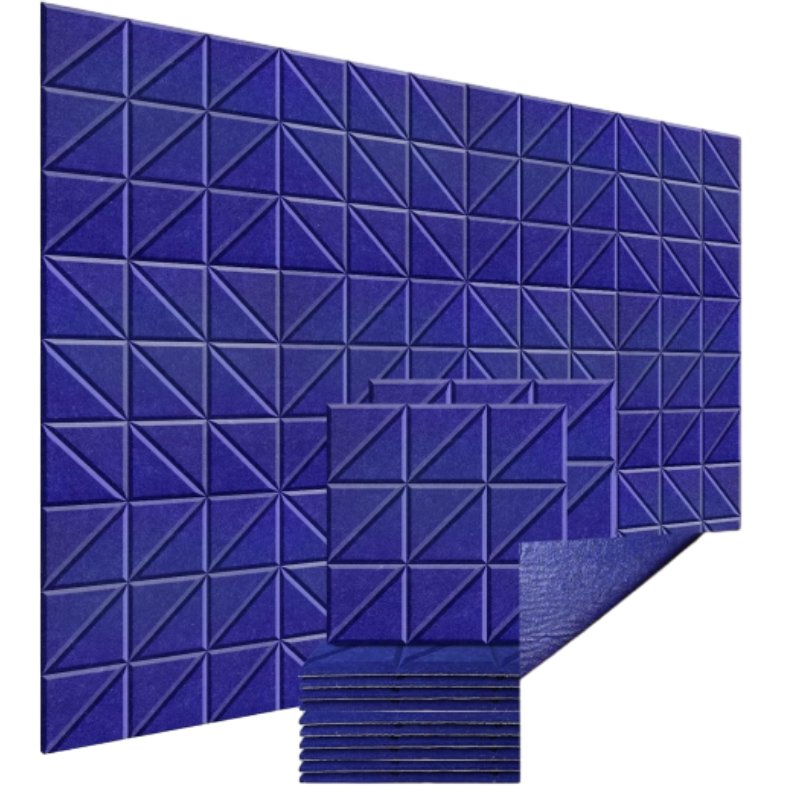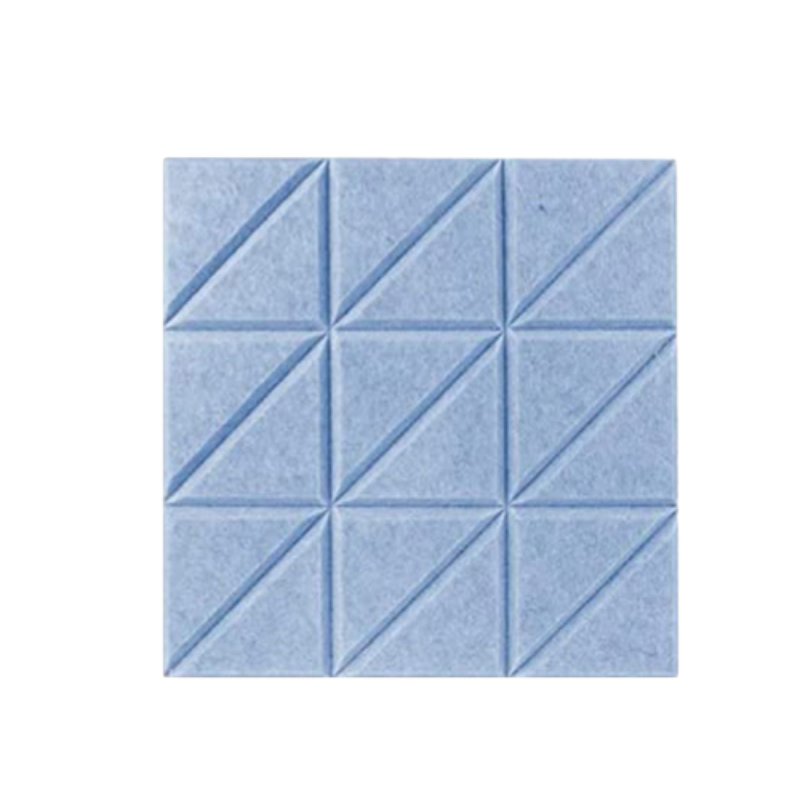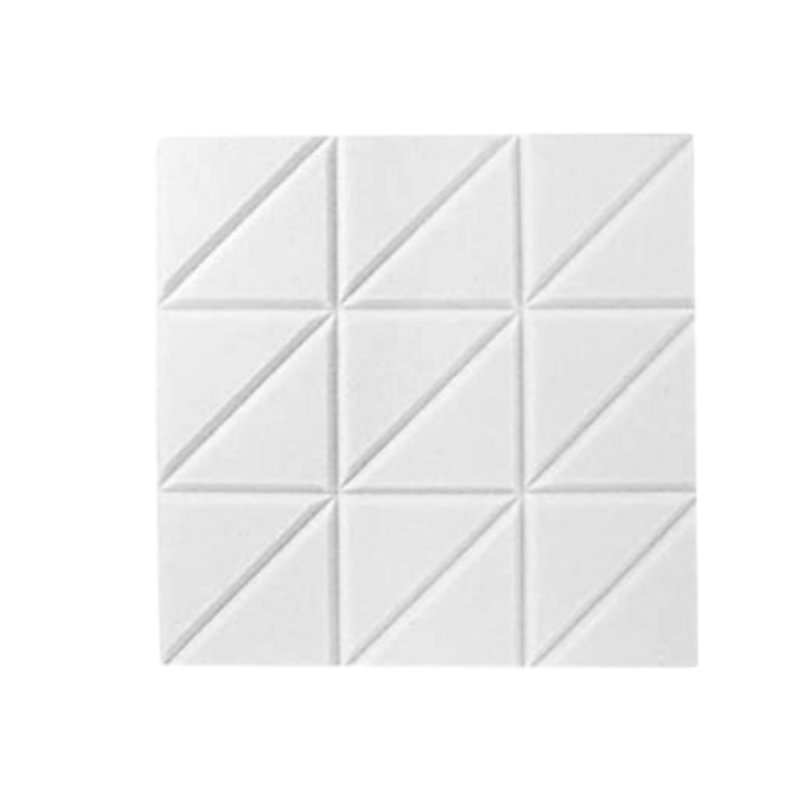The Evolution of Acoustic Solutions: Introducing pet panel ceiling
In contemporary architectural design, the integration of effective acoustic management has transitioned from a mere afterthought to a critical design imperative. Modern commercial, educational, and residential spaces increasingly prioritize environments that foster concentration, reduce noise pollution, and enhance communication clarity. Traditional acoustic solutions often present limitations in terms of aesthetics, sustainability, and installation complexity. This evolving landscape has spurred innovation, leading to the development of advanced materials that address these challenges holistically. Among these innovations, the pet panel ceiling stands out as a revolutionary product, offering an unparalleled blend of superior sound absorption, environmental sustainability, and versatile design capabilities. Its emergence signifies a pivotal shift towards eco-conscious yet high-performance building materials, setting new benchmarks for acoustic comfort in diverse settings.
Industry Trends and Technological Advancements in Acoustic Materials
The global acoustic materials market is experiencing robust growth, driven by stringent building codes, increased awareness of well-being in indoor environments, and a growing demand for sustainable building products. Forecasts indicate the market will reach approximately $15 billion by 2027, growing at a CAGR of over 5% from 2022. A significant trend within this growth is the pronounced shift towards eco-friendly and recycled materials. Consumers and businesses alike are actively seeking products that minimize environmental impact without compromising performance. This has propelled research and development into materials like recycled polyethylene terephthalate (PET) felt, which forms the core of the New Design Environmental-Friendly Acoustical Ceiling Pet Acoustic Panel For Home Theater. Unlike traditional materials that may contain harmful volatile organic compounds (VOCs) or be difficult to recycle, PET acoustic panels offer a non-toxic, recyclable, and highly effective alternative, aligning with green building initiatives such as LEED certification requirements. The continuous innovation in textile engineering and material science is enabling these panels to achieve higher Noise Reduction Coefficients (NRC) while remaining lightweight and aesthetically pleasing.
Understanding the New Design Environmental-Friendly Acoustical Ceiling Pet Acoustic Panel: Manufacturing Process & Material Science
The manufacturing of the New Design Environmental-Friendly Acoustical Ceiling Pet Acoustic Panel (or pet panel ceiling) is a sophisticated process that transforms post-consumer plastic waste into high-performance acoustic solutions. The primary material is recycled PET, predominantly sourced from discarded plastic bottles, which undergoes a meticulous process to become the fibrous felt. The typical process begins with the collection and cleaning of PET bottles, followed by shredding into flakes. These flakes are then melted and extruded into fine fibers, which are subsequently carded and laid into a uniform web. This web is then subjected to a thermal bonding process, where heat and pressure are applied to create a stable, non-woven felt without the need for chemical binders, ensuring a low-VOC product. Precision cutting using advanced CNC machinery then shapes these large felt rolls into various panel sizes and intricate designs, including those suitable for a pet panel ceiling application. Quality control is rigorous throughout, adhering to international standards such as ISO 9001 for manufacturing excellence and ASTM E84 for fire safety, classifying them typically as Class A flame retardant. The finished panels are highly durable, resistant to moisture, mold, and bacteria, and possess excellent sound absorption properties, making them ideal for long-term use in demanding environments. This meticulous process ensures each panel contributes to a healthier indoor environment and a more sustainable future.

Technical Parameters and Performance Metrics
The performance of a pet panel ceiling is quantified by several key technical parameters, crucial for architects, designers, and engineers in specifying the correct solution for a given space. The Noise Reduction Coefficient (NRC) is perhaps the most critical metric, indicating the average sound absorption performance of a material. For high-quality PET acoustic panels, NRC values typically range from 0.8 to 0.95, meaning they absorb 80-95% of incident sound energy. This high absorption capability is due to the porous nature of the PET felt, which effectively traps sound waves. Density also plays a vital role, often ranging from 150 kg/m³ to 250 kg/m³, influencing both acoustic performance and structural integrity. Fire rating, typically ASTM E84 Class A or B1 (EN 13501-1), ensures safety in commercial installations. Panels are available in various standard thicknesses, such as 9mm and 12mm, and can be customized in dimensions, from standard 1200x2400mm sheets to specific tile sizes. This robust performance profile makes pet panel ceiling systems a preferred choice for controlling reverberation and echo in a multitude of environments.
Key Specifications for New Design PET Acoustic Panel
| Parameter | Value/Range | Description |
|---|---|---|
| Material Composition | 100% Recycled PET Fiber | Sustainable, environmental-friendly, non-toxic. |
| Thickness Options | 9mm, 12mm (customizable) | Affects sound absorption capability and rigidity. |
| Density | 150-250 kg/m³ | Higher density generally correlates with better low-frequency absorption. |
| Noise Reduction Coefficient (NRC) | 0.8 - 0.95 (depending on thickness/installation) | Indicates percentage of sound absorbed. Excellent for reverberation control. |
| Fire Rating | ASTM E84 Class A, EN 13501-1 B-s1, d0 | Critical for safety compliance in commercial and public spaces. |
| Formaldehyde Emission | E0 Standard | Ensures minimal or no formaldehyde emissions for healthy indoor air quality. |
| Service Life | Approx. 20-30 years | Long-lasting performance with proper installation and care. |

Versatile Application Scenarios and Sector-Specific Advantages
The adaptability of the pet panel ceiling makes it suitable for an expansive range of applications, providing tailored acoustic solutions across diverse sectors. In corporate offices and open-plan workspaces, these panels effectively mitigate sound distractions, boosting employee concentration and productivity. For educational institutions, ranging from classrooms to university lecture halls, they create optimal learning environments by reducing echo and improving speech intelligibility, which is crucial for academic success. Home theaters benefit immensely from the enhanced sound clarity and immersive audio experience that a properly installed pet panel ceiling delivers, absorbing unwanted reflections and standing waves. Furthermore, in commercial retail spaces, restaurants, and hospitality venues, these panels contribute to a more pleasant customer experience by controlling ambient noise, while simultaneously offering aesthetic versatility. Compared to felt panels wall installations, which primarily address lateral sound reflections, ceiling panels are exceptionally effective at managing vertical sound paths, controlling overall room reverberation and preventing sound from bouncing off hard ceiling surfaces. Their lightweight nature and ease of installation also make them ideal for quick retrofits and new constructions alike, offering an immediate improvement in acoustic comfort and overall environmental quality. The non-corrosive and moisture-resistant properties also make them viable for sectors like water treatment facilities or certain industrial control rooms where sound needs to be managed without risk of material degradation.

Technical Advantages and Comparative Analysis
When evaluating acoustic solutions, the technical advantages of a pet panel ceiling become strikingly clear, especially when contrasted with traditional alternatives. PET acoustic panels boast superior acoustic absorption (high NRC), ensuring significant reduction in reverberation time, crucial for speech clarity and overall sound quality. Their open-cell fibrous structure is inherently designed for sound energy dissipation, outperforming many denser materials that merely reflect sound. Furthermore, PET panels are lightweight, simplifying installation and reducing structural load, unlike heavy gypsum or concrete panels. From an environmental standpoint, their composition from recycled materials and low VOC emissions provide a distinct edge over fiberglass or mineral fiber panels, which often require careful handling due to airborne fibers or chemical binders. The inherent durability and resistance to moisture, mold, and mildew contribute to a longer service life and lower maintenance costs. Moreover, the design versatility allows for a broader spectrum of aesthetic integration, from simple flat panels to intricate 3D designs, offering architects and interior designers unparalleled creative freedom. This combination of performance, sustainability, and aesthetic flexibility positions acoustic panels felt made from PET as a leading choice in modern acoustic design.
Comparative Analysis: PET Acoustic Panels vs. Traditional Materials
| Feature | PET Acoustic Panel | Mineral Fiber Panel | Fiberglass Panel |
|---|---|---|---|
| Acoustic Performance (NRC) | High (0.8 - 0.95) | Medium (0.6 - 0.8) | High (0.8 - 0.9) |
| Sustainability | Excellent (Recycled PET, Recyclable) | Fair (Some recycled content, limited recyclability) | Fair (Some recycled content, difficult to recycle) |
| Indoor Air Quality (VOCs) | Very Low/None | Moderate | Moderate |
| Durability | Excellent (Impact, moisture, mold resistant) | Good (Can sag, susceptible to moisture) | Good (Fragile, susceptible to moisture) |
| Installation | Easy (Lightweight, simple cutting) | Moderate (Can be dusty, brittle) | Moderate (Requires protective gear, itchy) |
| Aesthetic Versatility | High (Wide color/shape options, printability) | Limited (Standard colors/textures) | Limited (Fabric wrapped, limited shapes) |

Customized Solutions and Project Implementation
Recognizing that every project presents unique acoustic and aesthetic requirements, providers of pet panel ceiling solutions often offer comprehensive customization services. This includes a vast palette of colors, ranging from subtle neutrals to vibrant hues, enabling seamless integration with any interior design scheme. Beyond color, panels can be manufactured in various thicknesses (e.g., 9mm, 12mm) and cut into bespoke shapes, sizes, and patterns using advanced CNC routing technology. This capability allows for the creation of intricate designs, logos, or artistic installations that serve both functional and decorative purposes. From simple rectangular tiles for a suspended ceiling grid to complex three-dimensional forms that create visual interest, the design possibilities are virtually limitless. Professional manufacturers like YTAKU (ytakupanel.com) typically provide end-to-end support, including acoustic modeling, design consultation, technical drawings, and installation guidance. For example, in a recent university library project, a customized acoustic panels felt solution was designed to not only absorb sound but also mimic the university's crest as a prominent ceiling feature, significantly enhancing both the acoustic comfort and the architectural identity of the space. This level of customization ensures that the acoustic solution is perfectly aligned with the client's vision and performance expectations.
Ensuring Trust: Quality Assurance, Warranty, and Customer Support
Trust is paramount in B2B engagements, particularly for critical building components like acoustic panels. Reputable manufacturers of pet panel ceiling products adhere to rigorous quality assurance protocols, often holding certifications such as ISO 9001 (Quality Management) and ISO 14001 (Environmental Management), validating their commitment to excellence and sustainability. Furthermore, product-specific certifications like Oeko-Tex Standard 100 ensure the absence of harmful substances, making the panels safe for all indoor environments. Manufacturers typically offer comprehensive warranties, ranging from 5 to 10 years, covering material and manufacturing defects, underscoring their confidence in product longevity. The estimated service life for well-maintained PET acoustic panels can extend beyond 20 years. Regarding delivery, established suppliers ensure efficient logistics and transparent communication regarding lead times, which typically range from 2-4 weeks depending on customization and order volume. Post-sales support includes technical assistance for installation, maintenance guidelines, and responsive customer service for any queries or concerns. This holistic approach to quality, transparency, and support builds enduring partnerships and ensures customer satisfaction. A dedicated customer support team is readily available to provide assistance, from initial project conceptualization to post-installation inquiries, ensuring a seamless experience for clients globally.

Frequently Asked Questions (FAQ)
Q1: What is the primary benefit of using a pet panel ceiling over traditional acoustic materials?
A1: The primary benefit lies in the combination of high acoustic performance (excellent NRC values), superior environmental sustainability (made from recycled PET bottles, low VOCs), and exceptional design versatility. They are also highly durable, resistant to moisture and mold, and easy to install, making them a more holistic solution than many traditional options.
Q2: Are pet panel ceiling panels safe for sensitive environments like schools or healthcare facilities?
A2: Absolutely. PET acoustic panels are manufactured without chemical binders, have very low to no VOC emissions (often meeting E0 standards), and are typically Oeko-Tex Standard 100 certified, ensuring they are free from harmful substances. Their non-allergenic and non-irritant properties make them ideal for sensitive environments where indoor air quality is paramount.
Q3: Can these acoustic panels felt be customized in terms of color and design?
A3: Yes, customization is a key advantage. Manufacturers offer a wide array of colors, and panels can be precision-cut into virtually any shape or pattern using CNC technology. This allows for bespoke designs that seamlessly integrate with specific architectural aesthetics or branding requirements, making them much more versatile than standard fixed-form acoustic solutions.
Q4: What is the expected lifespan of a pet panel ceiling?
A4: With proper installation and minimal maintenance, PET acoustic panels are designed for longevity, typically offering a service life of 20 to 30 years. Their inherent resistance to moisture, mold, and general wear and tear contributes significantly to their extended durability.
Q5: How do felt panels wall compare to ceiling installations for acoustic treatment?
A5: While both wall and ceiling panels contribute to acoustic comfort, they address different aspects. Wall panels (like felt panels wall) are highly effective at controlling horizontal sound reflections and flutter echo within a room. Ceiling panels, however, are often more critical for managing overall room reverberation and preventing sound from bouncing off large, hard ceiling surfaces, which can be a primary source of acoustic issues in many spaces. Combining both can offer the most comprehensive acoustic solution.
Conclusion: Advancing Acoustic Comfort with Sustainable Innovation
The advent of the pet panel ceiling marks a significant milestone in the evolution of building materials, addressing the critical need for effective sound management in an environmentally responsible manner. By leveraging recycled PET, these panels not only deliver outstanding acoustic performance with high NRC values but also contribute to a circular economy and healthier indoor air quality. Their technical advantages, including durability, lightweight design, and ease of installation, combined with extensive customization options, make them an ideal choice for a vast array of applications, from bustling corporate environments to tranquil home theaters. As industries continue to prioritize sustainability and well-being, the role of innovative solutions like the pet panel ceiling will only grow, setting new standards for both acoustic excellence and ecological responsibility in the built environment. Investing in these advanced acoustic solutions means investing in human comfort, productivity, and a more sustainable future.
References
- Acoustical Society of America. (2023). Standards for Room Acoustics and Noise Control.
- Environmental Protection Agency (EPA). (2022). Recycling of PET Plastic and Its Applications.
- ASTM International. (2024). ASTM E84: Standard Test Method for Surface Burning Characteristics of Building Materials.
- International Organization for Standardization (ISO). (2023). ISO 9001: Quality Management Systems and ISO 14001: Environmental Management Systems.
- Journal of Green Building. (2021). Sustainable Materials in Architectural Design: A Case Study of Recycled PET Felt.
-
Waterproof Dog Blankets for Indoor and Outdoor UseNewsAug.01,2025
-
Sustainable Wool Cat Beds Eco-Friendly Choices for Pet OwnersNewsAug.01,2025
-
Snuffle Ball Benefits for Dogs Mental Stimulation and ExerciseNewsAug.01,2025
-
Puppy Treat Puzzles as Social Tools Fostering Bonding Through PlayNewsAug.01,2025
-
Custom Wooden Pet Houses Tailored to Your Pet’s PersonalityNewsAug.01,2025
-
Corrosion Resistance in Environments: A Guide for Washer Hose ClampsNewsAug.01,2025
